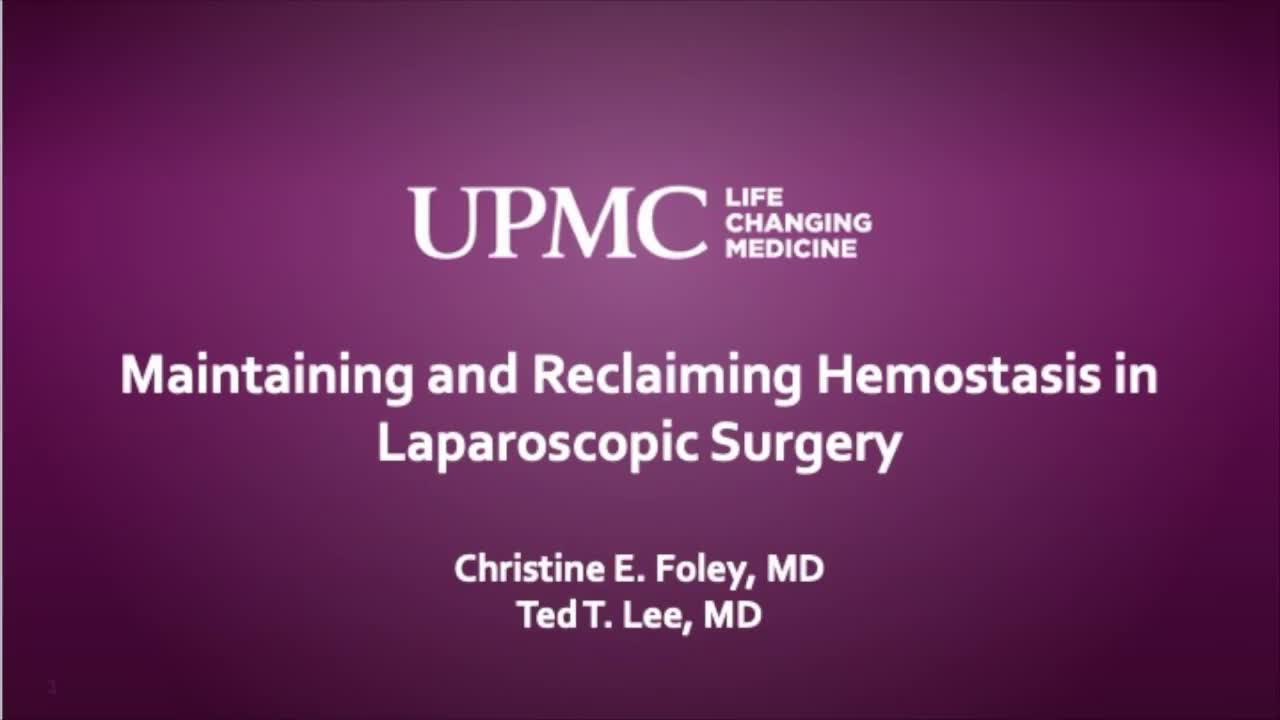User login
Multiple sclerosis updates from AAN 2021
Mitzi Joi Williams, MD, Medical Director and CEO of Joi Life Wellness Group in Atlanta, GA, discusses treatment data and other timely updates in multiple sclerosis (MS) coming out of the American Academy of Neurology (AAN) 2021 Annual Meeting.
Dr. Williams introduces the new National African Americans with Multiple Sclerosis Registry, an important initiative aimed at expanding evidence-based knowledge of MS in African American patients, increasing clinical trial participation, and engaging in research that will benefit this community.
In a review of a long-term analysis of evobrutinib, Dr. Williams shares the positive efficacy and safety outcomes that were observed and maintained in patients receiving evobrutinib 75 mg twice daily throughout the duration of the 48-week double-blind, randomized, phase 2 trial and the 60-week open-label extension portions of the study.
Next, Dr. Williams highlights a study of patients taking disease-modifying therapies (DMTs) at the NYU MS Care Center. The analysis found factors such as public insurance status, younger age, and Hispanic ethnicity to be larger predictors of COVID-19 infection in this patient population than any of the DMTs that were studied.
Lastly, Dr. Williams discusses an analysis of racial and ethnic differences in patients receiving ofatumumab in the ASCLEPIOS I/II and APOLITOS trials. The study revealed no clinically relevant differences in annualized relapse rate, pharmacokinetics, B-cell depletion, or safety profile between the study populations.
--
Mitzi Joi Williams, MD, Medical Director, CEO; Department of Neurology, Joi Life Wellness Group, Atlanta, Georgia
Mitzi Joi Williams, MD, has disclosed the following relevant financial relationships:
Serve(d) as a director, officer, partner, employee, advisor, consultant, or trustee for: Biogen Idec; EMD Serono; Genentech; Novartis; Bristol-Myers Squibb; AbbVie; Alexion; Novartis.
Serve(d) as a speaker or a member of a speakers bureau for: Biogen Idec; EMD Serono; Genentech Roche; Novartis; Bristol-Myers Squibb.
Mitzi Joi Williams, MD, Medical Director and CEO of Joi Life Wellness Group in Atlanta, GA, discusses treatment data and other timely updates in multiple sclerosis (MS) coming out of the American Academy of Neurology (AAN) 2021 Annual Meeting.
Dr. Williams introduces the new National African Americans with Multiple Sclerosis Registry, an important initiative aimed at expanding evidence-based knowledge of MS in African American patients, increasing clinical trial participation, and engaging in research that will benefit this community.
In a review of a long-term analysis of evobrutinib, Dr. Williams shares the positive efficacy and safety outcomes that were observed and maintained in patients receiving evobrutinib 75 mg twice daily throughout the duration of the 48-week double-blind, randomized, phase 2 trial and the 60-week open-label extension portions of the study.
Next, Dr. Williams highlights a study of patients taking disease-modifying therapies (DMTs) at the NYU MS Care Center. The analysis found factors such as public insurance status, younger age, and Hispanic ethnicity to be larger predictors of COVID-19 infection in this patient population than any of the DMTs that were studied.
Lastly, Dr. Williams discusses an analysis of racial and ethnic differences in patients receiving ofatumumab in the ASCLEPIOS I/II and APOLITOS trials. The study revealed no clinically relevant differences in annualized relapse rate, pharmacokinetics, B-cell depletion, or safety profile between the study populations.
--
Mitzi Joi Williams, MD, Medical Director, CEO; Department of Neurology, Joi Life Wellness Group, Atlanta, Georgia
Mitzi Joi Williams, MD, has disclosed the following relevant financial relationships:
Serve(d) as a director, officer, partner, employee, advisor, consultant, or trustee for: Biogen Idec; EMD Serono; Genentech; Novartis; Bristol-Myers Squibb; AbbVie; Alexion; Novartis.
Serve(d) as a speaker or a member of a speakers bureau for: Biogen Idec; EMD Serono; Genentech Roche; Novartis; Bristol-Myers Squibb.
Mitzi Joi Williams, MD, Medical Director and CEO of Joi Life Wellness Group in Atlanta, GA, discusses treatment data and other timely updates in multiple sclerosis (MS) coming out of the American Academy of Neurology (AAN) 2021 Annual Meeting.
Dr. Williams introduces the new National African Americans with Multiple Sclerosis Registry, an important initiative aimed at expanding evidence-based knowledge of MS in African American patients, increasing clinical trial participation, and engaging in research that will benefit this community.
In a review of a long-term analysis of evobrutinib, Dr. Williams shares the positive efficacy and safety outcomes that were observed and maintained in patients receiving evobrutinib 75 mg twice daily throughout the duration of the 48-week double-blind, randomized, phase 2 trial and the 60-week open-label extension portions of the study.
Next, Dr. Williams highlights a study of patients taking disease-modifying therapies (DMTs) at the NYU MS Care Center. The analysis found factors such as public insurance status, younger age, and Hispanic ethnicity to be larger predictors of COVID-19 infection in this patient population than any of the DMTs that were studied.
Lastly, Dr. Williams discusses an analysis of racial and ethnic differences in patients receiving ofatumumab in the ASCLEPIOS I/II and APOLITOS trials. The study revealed no clinically relevant differences in annualized relapse rate, pharmacokinetics, B-cell depletion, or safety profile between the study populations.
--
Mitzi Joi Williams, MD, Medical Director, CEO; Department of Neurology, Joi Life Wellness Group, Atlanta, Georgia
Mitzi Joi Williams, MD, has disclosed the following relevant financial relationships:
Serve(d) as a director, officer, partner, employee, advisor, consultant, or trustee for: Biogen Idec; EMD Serono; Genentech; Novartis; Bristol-Myers Squibb; AbbVie; Alexion; Novartis.
Serve(d) as a speaker or a member of a speakers bureau for: Biogen Idec; EMD Serono; Genentech Roche; Novartis; Bristol-Myers Squibb.

A Pivotal Moment in Cancer Surgery, Captured on Film
Few ever see this side of cancer care. Our cameras go behind the scenes as a surgical oncologist faces a crucial moment in the OR in this first episode of a new video series, The Oncologists.
Medscape Oncology © 2021 WebMD, LLC
Any views expressed above are the author's own and do not necessarily reflect the views of WebMD or Medscape.
Cite this: A Pivotal Moment in Cancer Surgery, Captured on Film - Medscape - Feb 18, 2021.
Few ever see this side of cancer care. Our cameras go behind the scenes as a surgical oncologist faces a crucial moment in the OR in this first episode of a new video series, The Oncologists.
Medscape Oncology © 2021 WebMD, LLC
Any views expressed above are the author's own and do not necessarily reflect the views of WebMD or Medscape.
Cite this: A Pivotal Moment in Cancer Surgery, Captured on Film - Medscape - Feb 18, 2021.
Few ever see this side of cancer care. Our cameras go behind the scenes as a surgical oncologist faces a crucial moment in the OR in this first episode of a new video series, The Oncologists.
Medscape Oncology © 2021 WebMD, LLC
Any views expressed above are the author's own and do not necessarily reflect the views of WebMD or Medscape.
Cite this: A Pivotal Moment in Cancer Surgery, Captured on Film - Medscape - Feb 18, 2021.
Considerations for the surgical management of diaphragmatic endometriosis
Circumferential urethral diverticulum: A surgical conundrum
The surgical approach to the obliterated anterior cul-de-sac

Additional videos from SGS are available here, including these recent offerings:
• A minimally invasive modification for fascia lata mid-urethral sling
• Retroperitoneal anatomy and parametrial dissection in robotic uterine artery-sparing radical trachelectomy
• Maintaining and reclaiming hemostasis in laparoscopic surgery

Additional videos from SGS are available here, including these recent offerings:
• A minimally invasive modification for fascia lata mid-urethral sling
• Retroperitoneal anatomy and parametrial dissection in robotic uterine artery-sparing radical trachelectomy
• Maintaining and reclaiming hemostasis in laparoscopic surgery

Additional videos from SGS are available here, including these recent offerings:
• A minimally invasive modification for fascia lata mid-urethral sling
• Retroperitoneal anatomy and parametrial dissection in robotic uterine artery-sparing radical trachelectomy
• Maintaining and reclaiming hemostasis in laparoscopic surgery
A minimally invasive modification for fascia lata mid-urethral sling
mid-urethral sling
mid-urethral sling
mid-urethral sling
Retroperitoneal anatomy and parametrial dissection in robotic uterine artery-sparing radical trachelectomy
Maintaining and reclaiming hemostasis in laparoscopic surgery

Additional videos from SGS are available here, including these recent offerings:
- Safety and efficiency in the laparoscopic hysterectomy: Techniques to optimize the surgical approach
- Laparoscopic management of bladder fibroids: Surgical tips and tricks
- Laparoscopic techniques for Essure device removal

Additional videos from SGS are available here, including these recent offerings:
- Safety and efficiency in the laparoscopic hysterectomy: Techniques to optimize the surgical approach
- Laparoscopic management of bladder fibroids: Surgical tips and tricks
- Laparoscopic techniques for Essure device removal

Additional videos from SGS are available here, including these recent offerings:
- Safety and efficiency in the laparoscopic hysterectomy: Techniques to optimize the surgical approach
- Laparoscopic management of bladder fibroids: Surgical tips and tricks
- Laparoscopic techniques for Essure device removal
Safety and efficiency in the laparoscopic hysterectomy: Techniques to optimize the surgical approach

Additional videos from SGS are available here, including these recent offerings:
- Laparoscopic management of bladder fibroids: Surgical tips and tricks
- Laparoscopic techniques for Essure device removal
- A clitoral cyst of 'epidermal' proportions

Additional videos from SGS are available here, including these recent offerings:
- Laparoscopic management of bladder fibroids: Surgical tips and tricks
- Laparoscopic techniques for Essure device removal
- A clitoral cyst of 'epidermal' proportions

Additional videos from SGS are available here, including these recent offerings:
- Laparoscopic management of bladder fibroids: Surgical tips and tricks
- Laparoscopic techniques for Essure device removal
- A clitoral cyst of 'epidermal' proportions
Facing systemic racism in health care: Inequities in medical education

Resources:
- The Pulse of Perseverance: Three Black Doctors on Their Journey to Success
Pierre Johnson, MD; Maxime Madhere, MD, Joseph Semien Jr, MD - Mindset: The New Psychology of Success
Carol S. Dweck

Resources:
- The Pulse of Perseverance: Three Black Doctors on Their Journey to Success
Pierre Johnson, MD; Maxime Madhere, MD, Joseph Semien Jr, MD - Mindset: The New Psychology of Success
Carol S. Dweck

Resources:
- The Pulse of Perseverance: Three Black Doctors on Their Journey to Success
Pierre Johnson, MD; Maxime Madhere, MD, Joseph Semien Jr, MD - Mindset: The New Psychology of Success
Carol S. Dweck



